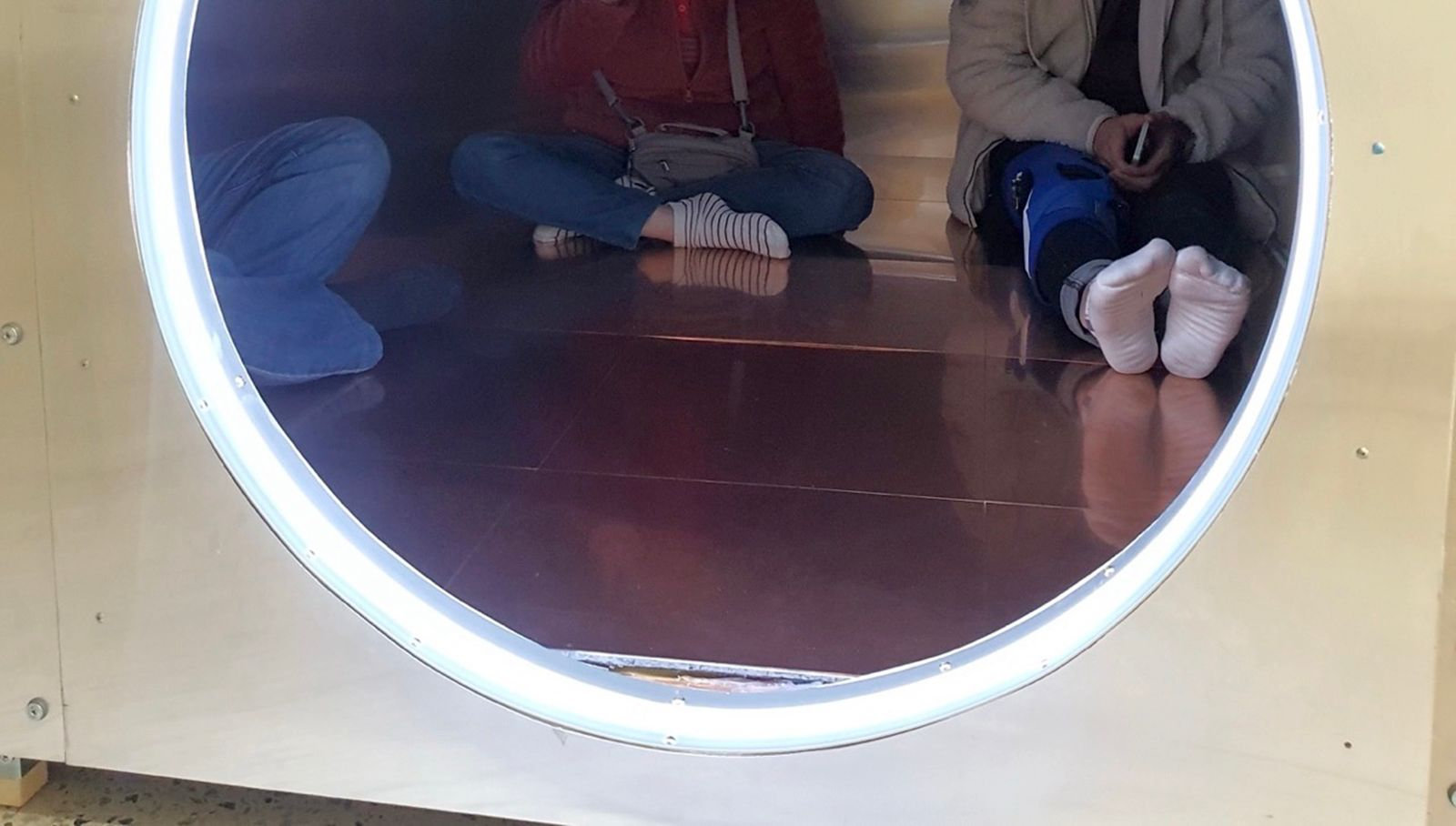Hwang Hyoduck
Vanashing Horn, 2022
Mixed media, Metal leaf (gold/silver)
950 x 230 x 230 cm
Unique work
Certificate of authenticity included
Price upon request
Show your appreciation with a like
About the work
- Materials
- Mixed media, Metal leaf (gold/silver)
- Dimensions
- 950 x 230 x 230 cm
- Frame
- Frame not included
- Signature
- Unsigned
- Certificate Of Authenticity
- Certificate included
In the 6th century B.C.E., the ancient tyrant Phalaris ordered the Athenian sculptor Perilaus to create a bronze bull as a tool of tyranny. Perilaus, who completed the cruel device, met his end by Phalaris’s command. This man-made instrument—crafted for use on Earth—was once seen as an extension of the human body. At the same time, the brazen bull of antiquity embodied a form that continues to resonate. In 1977, aboard the Voyager spacecraft, a Golden Record titled The Sounds of Earth was launched into deep space. It carries photographs, music, and multilingual greetings in LP format, drifting in the cosmos at an average temperature of -270°C—still wandering, still transmitting. Vanashing Horn, the central element of the Earthling Riding a Bull series, is an installation featuring a trumpet-shaped horn structure measuring 2.3 meters in length. Its surface is composed of a mixture of aluminum, copper, and carbon. Designed as a walk-in structure, it also functions as an antenna that utilizes the conductive properties of metal. Visitors can enter the sculpture and either stand or sit within a 1.5-pyeong (approximately 5 square meters) space, where the copper surface is gently warmed. Inside, they experience a comforting warmth and occasionally catch faint signals of radio waves. Radio frequencies ranging from 10 kHz to 130 MHz are received through the metal surface and transmitted through a three-channel speaker system. These sounds—mostly static and noise—occasionally resemble recognizable voices or music, resonating within the dim, enclosed space of the horn. The interplay of temperature and sound within the structure evokes a kind of whisper—yet at times, it scatters through the space like a scream.
About the artist
Hwang Hyoduck is an artist whose practice investigates the unstable thresholds of perception — where sensation emerges but resists capture, where images flicker before forming, and language fails to translate. His works begin not with clarity, but with the failure of the senses: a misfiring, a delay, a ghost signal. Rather than treating perception as a passive reception of external stimuli, Hwang approaches it as an active structure shaped by the body, media, technology, and environment. In his recent project The Head Matts 2025, he explores how the senses operate within fractured, contradictory, or obsolete systems. The installation features devices such as rotating mechanical arms, e-ink screens, lighting structures, glass tubes, and water circulation systems that function independently and asynchronously. They generate interference rather than coherence — sentences left unread, sounds barely audible, images that vanish as soon as they appear. Central to his interest is the notion that seemingly immaterial signals — radio waves, data, cosmic noise — are inseparable from material substances. Using elements like copper, silicone, carbon, and sulfur, his works do not serve a fixed function, but instead hold traces of sensory processes, afterimages, and the ephemeral conditions in which meaning fails to arrive but sensation remains. Referencing the Voyager spacecraft and its long-lost signals as a conceptual departure point, Hwang’s work suspends itself in a state of waiting — for a message that may never come, yet shapes the space of its absence. In this way, his practice becomes less about presenting completed meanings and more about cultivating a field of resonance, in which memory, technology, and material trace the fragile contours of perception itself.




